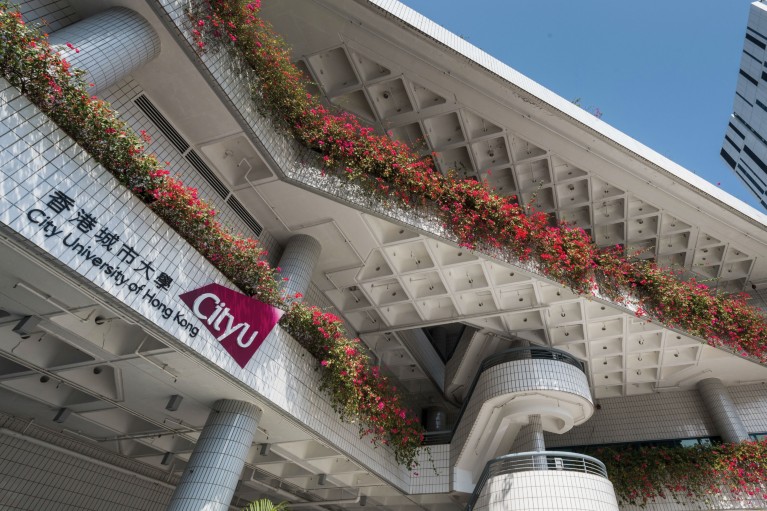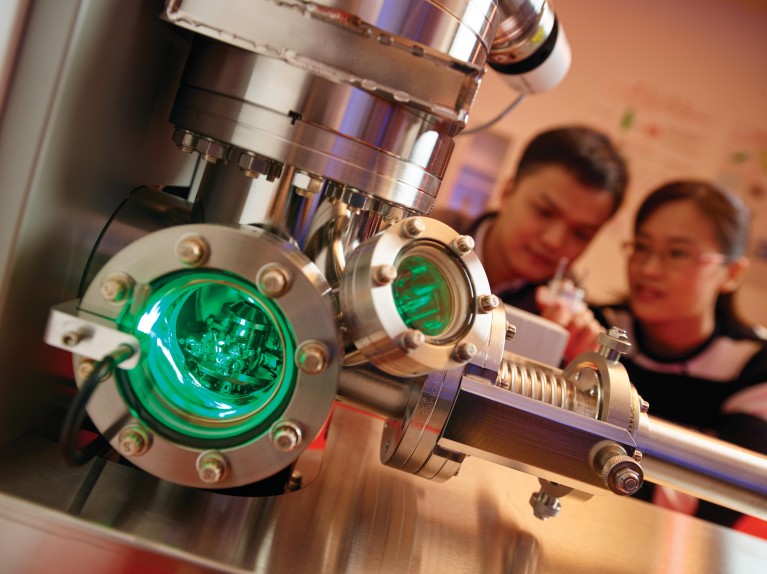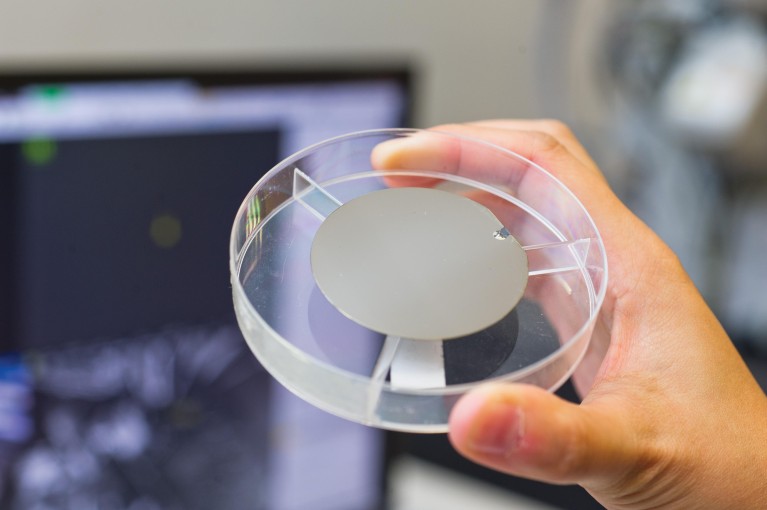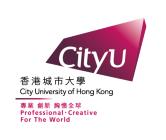
Novel materials
CityU’s research innovation is demonstrated in novel materials with great potential developed by its scientists. For instance, a research team led by Liu Chain-tsuan, University Distinguished Professor at CityU, and Chen Guang from Nanjing University of Science and Technology has developed a new way to fabricate titanium-aluminium nickel-base (TiAl+Nb) single crystal alloys that can withstand temperatures of up to 900°C.
TiAl alloys are lightweight and resistant to corrosion and heat. But the fabrication of polysynthetic twinned (PST) TiAl single crystals is a complicated and expensive process called crystal-seeding, in which the maximum service temperature of crystals cannot be raised further. “The industry has not been able to produce the TiAl+Nb single crystal alloy at a low cost,” says Liu.
To replace the costly crystal-seeding method, Liu and his team fabricated PST single crystals with controlled lamellar orientations by directional solidification. The new crystal exhibits substantially enhanced ductility and strength at ambient temperatures. At 900°C, the yield strength remains high at 637MPa with superior ductility and creep-resistance. The research was published in Nature Materials in 2016. “I believe the new material could be used for turbine blades and has wide applications in aerospace manufacturing,” says Liu.

The atom probe tomography laboratory at CityU helps researchers to understand nanomaterials better
Another research team at CityU has also achieved a ground-breaking advance. In a five-year study published in Nature in 2017, Lu Jian, CityU’s Vice-President (Research and Technology) and Chair Professor of Mechanical Engineering, and his team developed a dual-phase alloy film structure smaller than 10nm. This world-first structure, called ‘supra-nanometre-sized dual-phase glass crystal’ (SNDP-GC), constitutes a new family of alloy structures.
The new material is 10 times stronger than conventional crystalline magnesium alloy and has super-deformation capacity twice that of magnesium-based metallic glass. The magnesium-alloy system consists of nanocrystalline cores embedded in amorphous glassy shells. The strength of the resulting dual-phase material is 3.3 gigapascals (Gpa), making it the strongest magnesium alloy thin film ever developed.
This new alloy has plenty of potential applications. It can be used as a new prototype for biodegradable implants with excellent resistance, Lu says. “Patients would not have to undergo further surgeries after an operation, because these implants will degrade over time in the body,” he adds. The material could also be used as a coating for artificial joints for knees and hips with improved resistance to wear and corrosion, and reduced risk of allergic reactions.
Energy-saving flying robots
CityU experts have also designed insect-sized flying robots and collaborated with teams from other prestigious universities to find ways to keep such devices aloft for sustained periods. The research is conducted by Pakpong Chirarattananon, assistant professor in CityU’s Department of Mechanical and Biomedical Engineering, and a team led by Robert Wood at Harvard University.
To have broad uses, aerial robots need to be aloft for extended periods. Currently, flight time is curtailed by on-board power systems and mechanical fatigue. This is particularly true for smaller, battery-powered aircrafts.
To overcome these limitations, the team developed an innovative way for the robotic insect to detach from and perch on a wide range of materials by attaching a switchable electrostatic adhesive less than 200 nm thick to the top of the robot. The findings were published in Science in 2016.
Super magnesium alloy developed by CityU's research team. 
Interdisciplinary research
CityU has adopted three overarching strategic themes for its interdisciplinary research, namely ‘One Health’, ‘Digital Society’ and ‘Smart City’, which all demand expertise from across disciplines. They meant to foster innovative solutions to real-world problems.
An illustration of this kind of interdisciplinary innovation is the work of a team led by Paul Chu Kim-ho, Chair Professor in the Department of Physics and the Department of Materials Science and Engineering at CityU. They have revealed how cell-borne nanomaterials efficiently target cancer.
The baseline technology is the nanomaterial-mediated photothermal therapy (PTT), which has attracted a great deal of attention in recent years. By delivering photothermal nanoparticles to a tumour and subsequently irradiating near-infrared light, this novel therapy produces a high local temperature to kill harmful cells. Many types of two-dimensional nanomaterials, such as Bi2Se3, have been found to be promising PTT agents, but new options are needed to improve efficiency.
Chu and his team found that Bi2Se3 nanosheets, which have excellent near-infrared photothermal performance, exhibit high uptake of macrophages, a type of white blood cells, with negligible cytotoxicity. The Bi2Se3-laden-macrophages, administered intravenously, show prolonged blood circulation and can overcome the drug delivery barrier in tumour regions where oxygen concentration is very low, thus, targeting tumours efficiently.
Chu describes the strategy as ‘Trojan horses carrying bombs’. “When the ‘bombs’ interact with near-infrared light, the temperature rapidly increases, killing the tumours,” he says. The Bi2Se3-laden-macrophages exhibit good biocompatibility with no noticeable toxicity, and can be almost entirely excreted from the body within 25 days. Chu believes this cell-mediated strategy can be further extended to other nano-materials or drug-based therapies.
In a major contribution to digital society, a research project led by Jia Xiaohua, Chair Professor of Computer Science at CityU, develops new security and privacy-enhancing technologies for cloud storage. Jia aims to address challenges brought up by big data.
To enhance sustainability, Henry Chung Shu-hung from the Department of Electronic Engineering and his team have developed a smart battery monitoring system in collaboration with the Electrical and Mechanical Services Department of the Hong Kong SAR Government. The new system can test a battery’s state of charge real-time and provide various parameters on its conditions within three minutes instead of hours, significantly reducing the time required for monitoring and saving on energy losses by 90%. The feasibility of installing the system on government vehicles will be further explored, according to Chung.
With the goal of transforming research into innovations that benefit humanity, CityU will continue to strive for excellence in research and technology.


 Spotlight on Hong Kong
Spotlight on Hong Kong